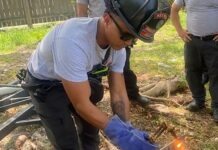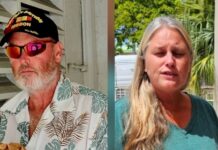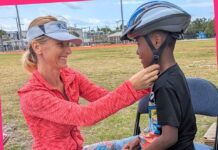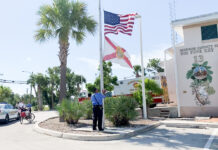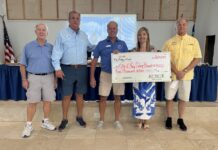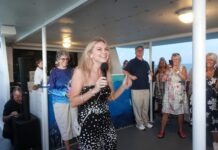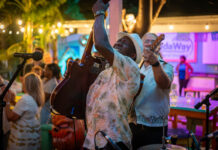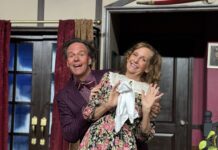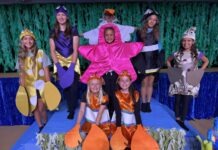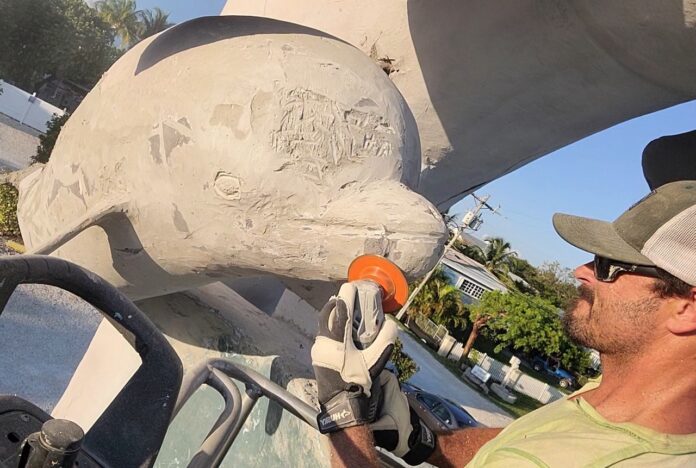
Driving into Marathon through Grassy Key, what you might have thought was a “zombie dolphin” was actually a sun-baked sculpture that’s survived every weather twist and turn the Keys have to offer for nearly half a century. The iconic statue of a mother and baby dolphin has welcomed visitors to the Dolphin Research Center for decades. Recently, it received a much-needed restoration thanks to the efforts of Ryan Kemppainen.
Kemppainen’s artistic journey began early, as he worked alongside his father, who was also an artist.
“I grew up in the sign industry with my dad and learned to work with all different kinds of materials,” he said.
Leveraging his expertise in contracting, sculpting and painting, Kemppainen undertook the long-overdue restoration of the 32-foot sculpture after witnessing its gradual decline. “The last couple of years, I’ve seen it deteriorate, so I knew I wanted to do this project, and it was right up my alley,” he said.
Kemppainen is not unfamiliar with roadside artwork, as he designed and built the Square Grouper Bar and Grille sign on Cudjoe Key following Hurricane Irma.
“I have built things like this, so I understood how the dolphins were built,” he said.
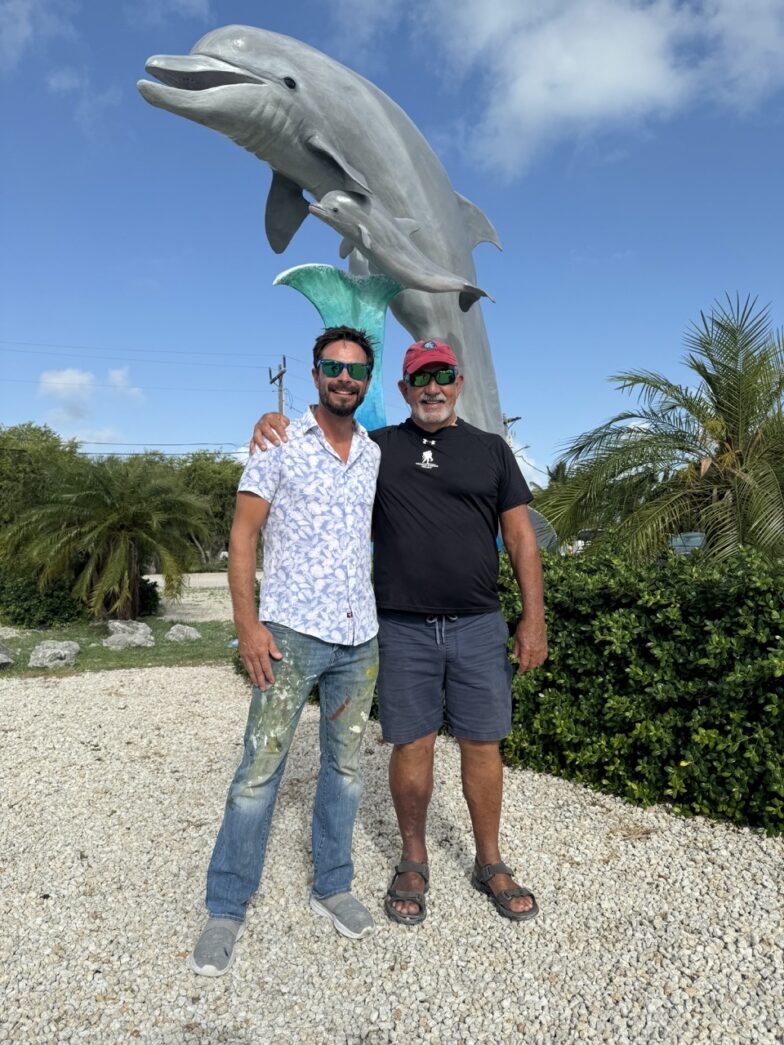
First installed in 1977 with a metal mesh laid over a basic framework and coated on its exterior with concrete, the structure complemented the existing 1960s round Dolphin Research Center sign to attract more visitors, DRC’s COO Armando “Mandy” Rodriguez told the Weekly.
Thankfully, Kemppainen said, the basic “bones” of the statue were still in good shape when he started his work.
“All the metal structure was good, except for where all these cracks came in and rusted away the metal mesh,” Kemppainen said. “As long as water doesn’t get back in, it’s gonna last another 50 years.”
Apart from the cosmetics, Kemppainen thought about how his restoration work could help the statue withstand the drastic weather of the Florida Keys.
“Ryan had a fabulous idea. He actually made a drain at the bottom of the tail, so even if water or moisture gets in there, it can drain out,” Rodriguez said.
Working tirelessly to avoid the summer heat, Kemppainen started at the beginning of May and completed the project in under two months.
“About half of it, I did just by myself,” he said. With an estimated 250 hours invested in the project – likely selling himself short in the estimation – his dedication and craftsmanship were crucial to completing the project.
For those who might not recall the sculpture’s previous condition, Kemppainen described the transformation: “It had a very basic paint job — gray dolphins with black eyes and a plain blue base,” he said. “I went above and beyond to make it look more realistic and have all the features, patterns and colors that dolphins have.”
The dolphins featured in the sculpture are modeled after real-life residents of the facility. The baby represents Tursi, a now 50-year-old dolphin who was the center’s first successful birth. She’s the daughter of two dolphins from the original “Flipper” movie.
“The movie and television show brought awareness to dolphins worldwide, and it all started right here,” Rodriguez said. Tursi’s mother, Little Bit, was the model for the larger dolphin depicted in the sculpture.
“I was given a bunch of photo references of the original Flipper and Tursi,” Kemppainen said. “To make the sculptures resemble the dolphins, the markings replicate Tursi when she was a baby.”
The baby dolphin presented the most significant challenge of the project, Kemppainen said.
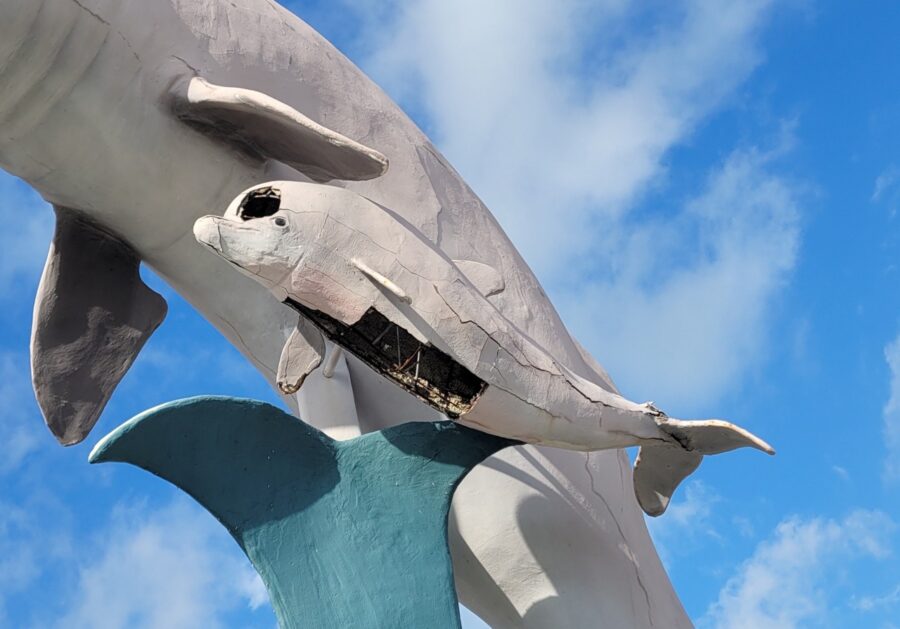
“I had to rebuild it from the inside out,” he explained. A large hole in the sculpture’s head had earned it the nickname “zombie dolphin,” a description that seems fitting after looking at past photos.
Before the project was even finished, Kemppainen was surprised to see so many visitors at the landmark. “I couldn’t believe how many people stopped by, even through the ugly phase of this restoration, and got pictures,” he said.
“Many other projects I used to do in restoration, like somebody’s kitchen or bathroom, you never see again,” Kemppainen said. “I wanted to work on something that is a historic landmark, and I will forever be able to look at it and enjoy myself.”
To follow Kemppaainen’s work, visit ryankemppainenart.com or follow “KemppArt” on Instagram.
